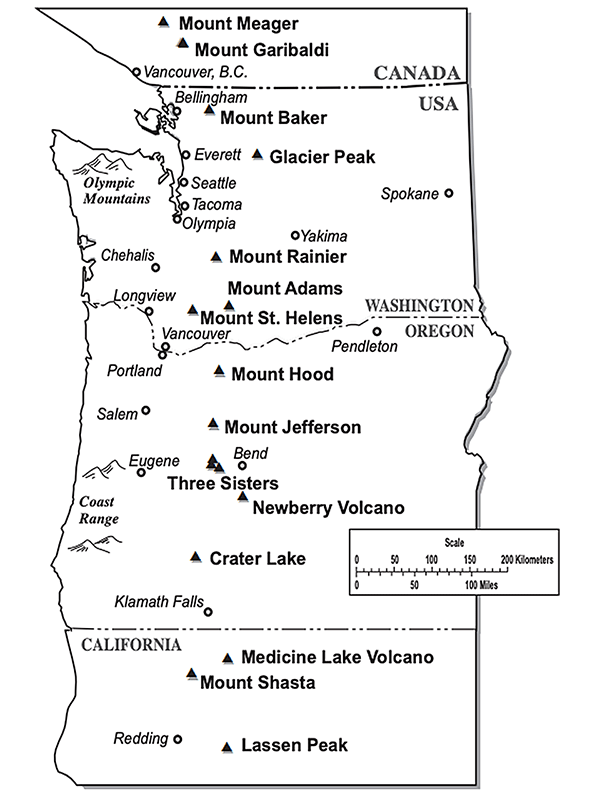Volcanic Activity
Volcanos
A volcano is a vent through which molten rock escapes to the earth’s surface. When pressure from gases within the molten rock becomes too great, an eruption occurs. Eruptions can be quiet or explosive; there may be lava flows, flattened landscapes, poisonous gases, flying rock and ash, or landslides / mudflows.
Because of their intense heat, lava flows are great fire hazards. Lava flows destroy everything in their path, but most move slowly enough that people can move out of the way. Fresh volcanic ash, made of pulverized rock, can be abrasive, acidic, gritty, gassy, and odorous. While not immediately dangerous to most adults, the acidic gas and ash can cause lung damage to small infants, to older adults, and to those suffering from severe respiratory illnesses. Volcanic ash also can damage machinery, including engines and electrical equipment. Ash accumulations mixed with water become heavy and can collapse roofs.1
Safety During a Volcanic Eruption
- Evacuate immediately from the volcano area and follow the evacuation order issued by authorities.
- Be aware of mudflows. The danger from a mudflow increases near stream channels and with prolonged heavy rains. Mudflows can move faster than you can walk or run. Look upstream before crossing a bridge, and do not cross the bridge if mudflow is approaching.
- Avoid areas downwind and river valleys downstream of the volcano.
- Put all machinery inside a garage or barn.
- Bring animals and livestock into barns and sheds if possible, other enclosed shelters otherwise.
- If trapped outdoors, seek shelter indoors.
- If caught in a rockfall, roll into a ball to protect your head.
- If caught near a stream, be alert for mudflows. Move up slope, especially if you hear the roar of a mudflow.
- Protection from falling ash:
- Wear long-sleeved shirts and long pants.
- Use goggles, and wear eyeglasses instead of contact lenses.
- Use a dust mask or hold a damp cloth over your face to help with breathing.
- Stay away from areas downwind from the volcano to avoid volcanic ash.
- Stay indoors until the ash has settled unless there is a danger of the roof collapsing.
- Close doors, windows, and all ventilation in the house (chimney vents, furnaces, air conditioners, fans, and other vents).
- Avoid running car or truck engines. Driving can stir up volcanic ash that can clog engines, damage moving parts, and stall vehicles.
For more information on volcanic eruptions, visit:
- https://www.ready.gov/volcanoes
- https://www.fema.gov/media-library-data/1533576019429-bb1357b03a5a2993bd8ee37767e47d86/Volcano_InfoSheet_080118.pdf
1 Source: https://www.fema.gov/media-library-data/20130726-1622-20490-0808/volcanoesfactsheet_finalrev.pdf
Contact Us
If you have questions or comments, please contact:
Sarah Nuss
Director of Emergency Management, City of Spokane
snuss@spokanecity.org

